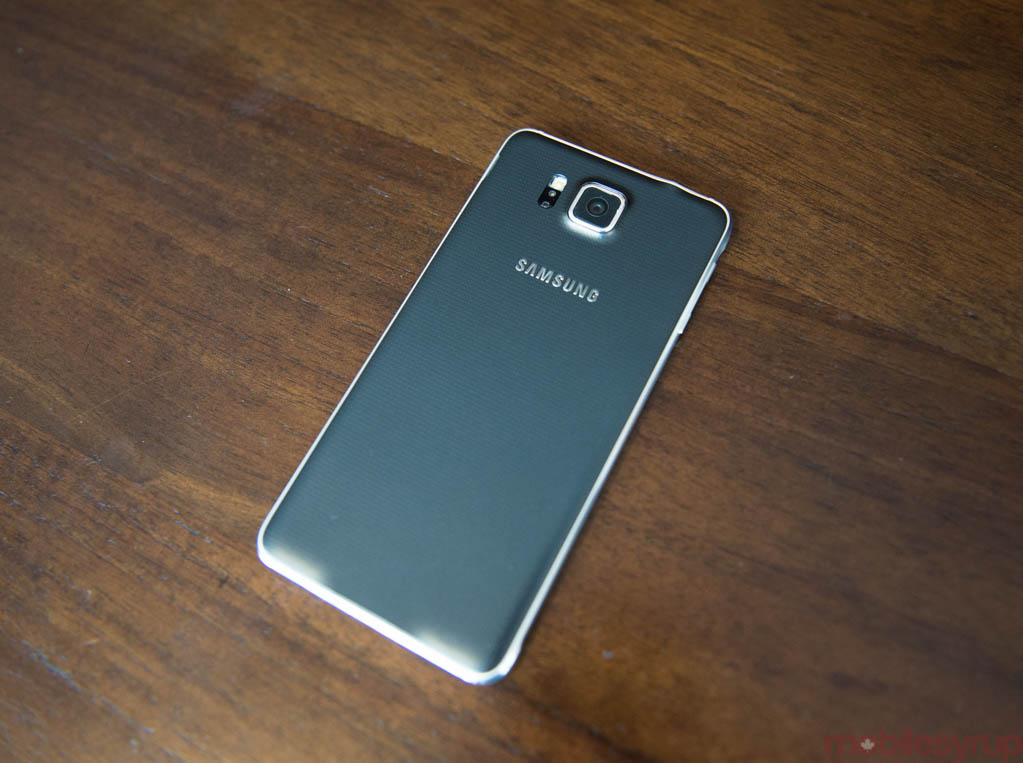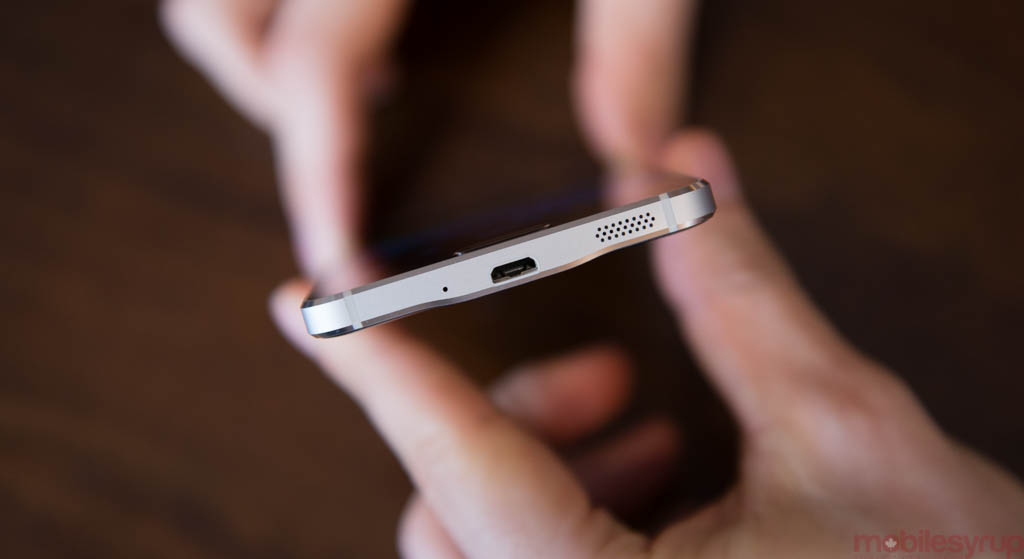
It seems both tragic and inevitable that after years of legal battles, claims of design infringement, and public catcalling, Samsung and Apple continue to circle like snakes eating each other’s tails. Apple, responding to an industry filled with larger devices pioneered partially by the likes of the Galaxy Note, went large with the iPhone 6 and 6 Plus. Now, Samsung, always willing to experiment, has released a sleek imitation of a device Apple no longer makes.
But is the merger of Apple design sensibilities and Galaxy heritage enough to make the Alpha stand on its own? Let’s find out.
Specs
- Android 4.4.4 with TouchWIZ Flat
- 4.7-inch 1280×720 pixel Super AMOLED display
- 2.5GHz Snapdragon 801 SoC w/ Adreno 330 GPU
- 2GB RAM / 32 GB internal storage (no microSD slot)
- CMOS 12MP rear-facing camera
- UHD 4K video capture @ 30fps, 1080p @ 60fps, 720p @ 120fps
- 2.1MP front-facing camera
- Wi-Fi (802.11 a/b/g/n/ac 2.4G+5GHz) VHT80 MIMO, Bluetooth 4.0, A-GPS, GLONASS, NFC
- Accelerometer, gyroscope, Finger Scanner fingerprint sensor, heart rate monitor
- HSDPA 850 / 900 / 1900 / 2100
- LTE 800 / 850 / 900 / 1800 / 1900 / 2100 / 2600
- 1860mAh removable battery
- 132.4 x 65.5 x 6.7mm
- 115 grams
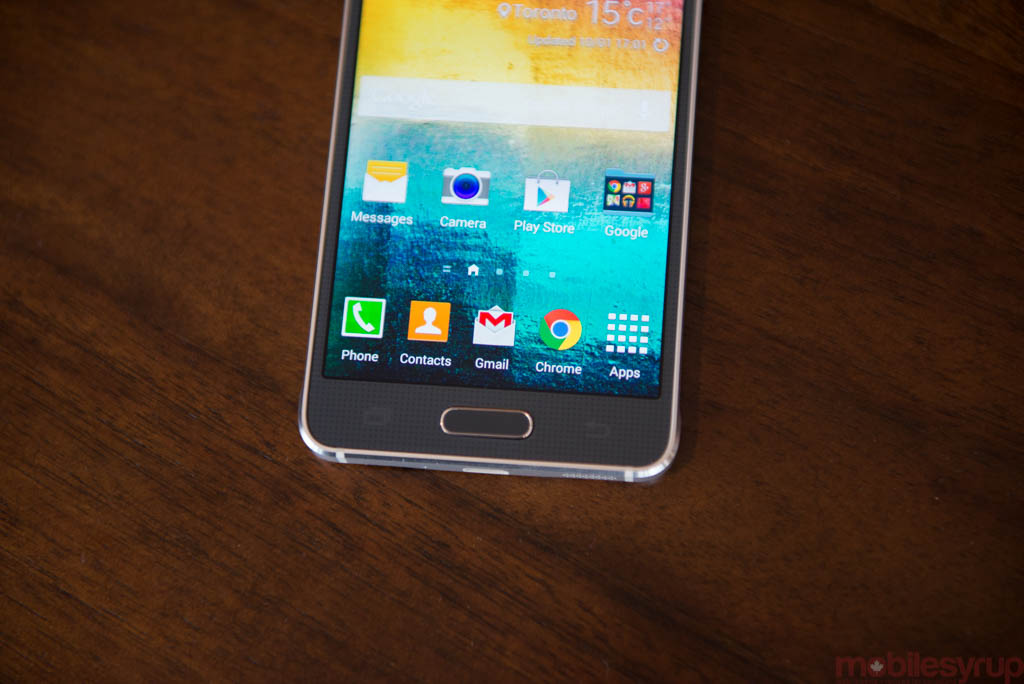
Design & Display
Though Samsung remains hellbent on making second impressions of Apple’s designs, they’re certainly getting better at it. The Galaxy Alpha is the company’s take on the iPhone 5s, infusing Apple-level premium materials with DNA from the Galaxy S line. And boy, does it work well.
Samsung says that the Galaxy Alpha was designed to make a statement, and that statement is premium. I’m not sure what has taken Samsung so long to adopt the brushed aluminum frame and soft-textured cover that adorns the Galaxy Alpha, but I’m certainly glad it did.
The premium materials allow the best parts of Samsung’s design identity to shine through in ways I’ve never noticed before: the company’s preference for metallic outlines and dimpled textures create a compelling blend of retro and modern on the Alpha, rather than the plasticky kitsch of other Samsung devices. While the Galaxy S5 felt utilitarian, the Galaxy Alpha feels like the kind of smartphone a Robotech pilot would use.
Feel is an important subject with the Galaxy Alpha, because the device feels like few others. Firstly, at 115 grams, the device is incredibly light. So light, in fact, that when I first picked it up I thought I was holding a dummy unit. Samsung has also abandoned the S5’s rounded sides in favour of the sharp edges a brushed aluminum frame allows. I often caught myself rubbing my thumb up and down the Alpha’s chamfered sides for the sheer pleasure of it.
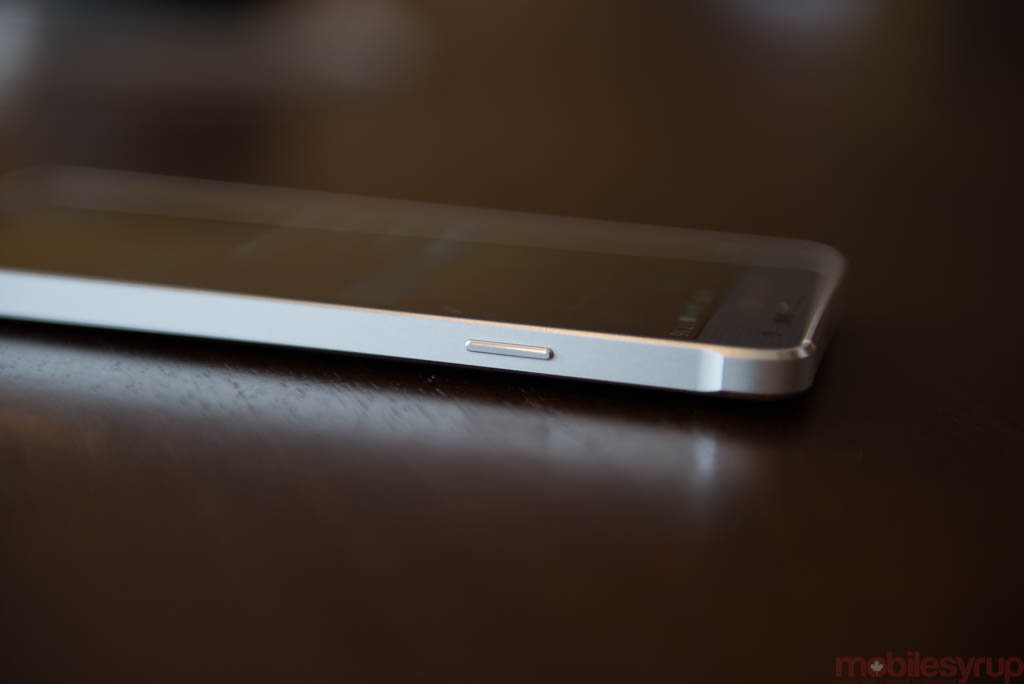
Paired with a 6.7mm frame and thin bezels, the Alpha’s iPhone 5s-inspired design makes it one of the most comfortable one-handed 4.7-inch devices on the market. Much like the device it’s based upon, I had no issue reaching any segment of the screen, nor did I fear it slipping from my hand. The Galaxy Alpha’s aesthetics and ergonomics are so impressive that after only a short time with the device I found myself wandering constantly, what if Apple had made this phone instead of the iPhone 6?
Which is why it’s so unfortunate that, like a bad hangover, a few hardware missteps so thoroughly undercut the Alpha’s wonderful first impression.
First and foremost, the Alpha’s screen is a disappointment, doubly so considering the excellent screen on the Galaxy S5. The issue is not one of resolution, as despite a drop from the S5’s 1080p, the Alpha’s 720p, 312 ppi display is still crisp on the smaller screen size. The problem is that the Alpha’s diamond-arranged PenTile subpixel layout revives issues solved years ago.
While the Alpha’s screen in no way suffers from the text crispness issues that plagued early AMOLED displays, it does in terms of colour accuracy and saturation. At the same time, the Alpha’s screen colours can seem both flat and schizophrenic, designed more to shock and awe rather than produce true fidelity.
Contrast is also an issue. The Galaxy Alpha may have deep blacks typical to an AMOLED screen, but its display’s egregious colour shifting lessens the contrast impact, as whites never really approach anything honest. The blue colour shifting when the screen is tilted at even moderate angles is embarrassing for a phone released in 2014.
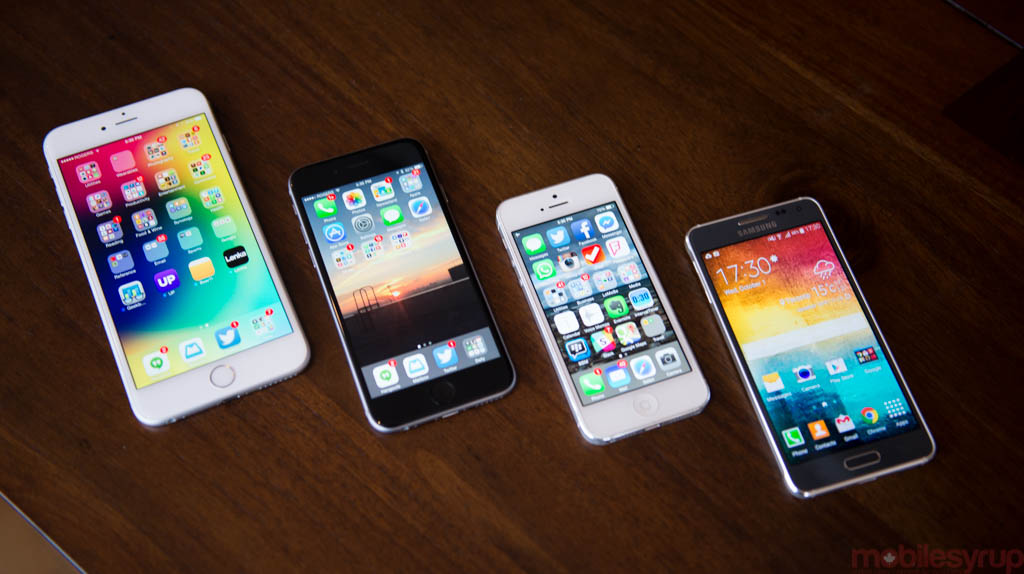
For those that wonder if my opinion simply reflects a “LCD: Ride or Die” attitude, I can attest that the Galaxy Alpha’s screen is blown away by the new Moto X, which features a more even pixel arrangement with none of the saturation or discolouration issues. It’s ironic that, plagued by screen complaints with the 2013 Moto X, Motorola went hi-resolution and hi-quality, while Samsung has seemingly sacrificed its quality displays in answer to calls for a new design.
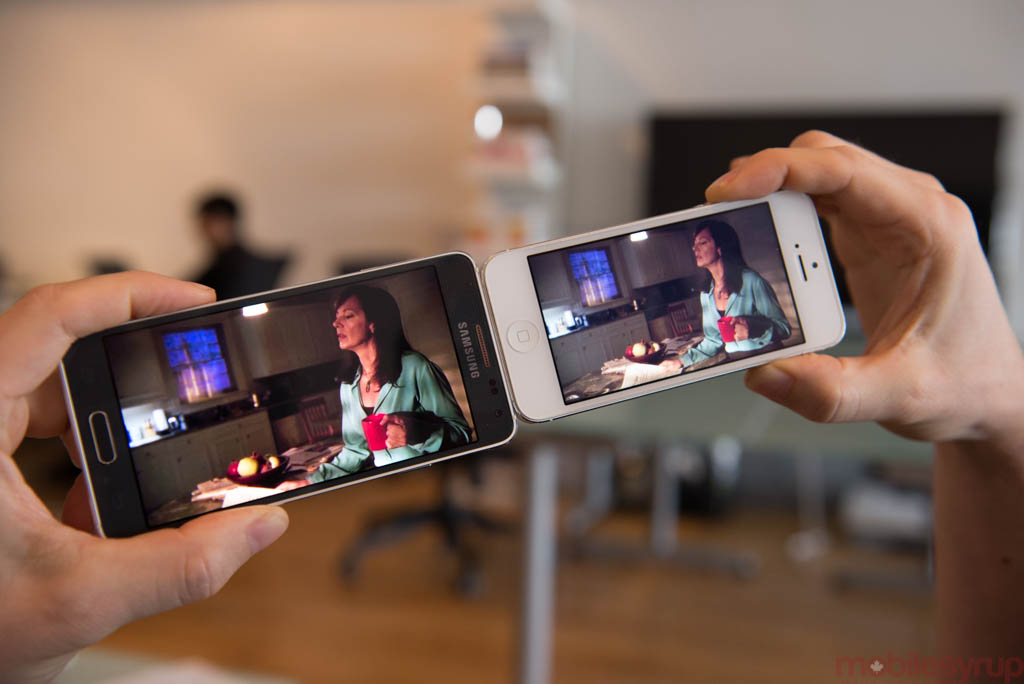
Other nagging hardware issues also grate, particularly the Galaxy Alpha’s Synaptics-built Finger Scanner. Much like Daniel with the Galaxy S5, I was particularly disappointed with the myriad ways in which Finger Scanner found reason to deny me access. In addition, Finger Scanner’s need for a perfectly vertical downward swipe made one-handed unlocking impossible, and its unreliability all the more frustrating. Yes, it does add an additional layer of security, and yes, PayPal linking with Finger Scanner is now supported in Canada, but I believe few will be willing to soldier on day-to-day to reap the rewards for their patience.
Multimedia and app-heavy Android users might also lose patience with the Galaxy Alpha’s 32GB internal memeory, as the device offers no expandable storage via MicroSD. While the SD slot’s omission was likely one that enabled the device’s slim design and price point, the lack of at least a 64GB model is disappointing. The Alpha also forgoes the S5’s USB 3.0 port in favour of USB 2.0, which brings a slowly falling single tear to this tech blogger’s eye.
Performance & Battery Life
The Galaxy Alpha’s disappointing screen is tied both to the device’s price point and smaller battery size, itself a concession for the phone’s thin design. Samsung squeezed a 1860 mAh removable battery into the Galaxy Alpha, significantly smaller than the Galaxy S5’s 2800 mAh, and unlikely able to power a similar display.
I was initially concerned that the Galaxy Alpha’s slim battery would be unable to power the device at all, but with an understanding that the battery-life was in service of a gorgeous design, I was pleasantly surprised at how much performance I was able to squeeze out of it. Like it’s big brother, the S5, the Galaxy Alpha’s TouchWIZ Flat OS sips power in most scenarios, and can regularly provide a full day’s (18 hours) use.
There are some caveats. While the Galaxy Alpha is generally power-friendly, it’s small battery means that activities which significantly drain all batteries really impact the device. Screen brightness is one obvious example, and I was in a constant battle with with TouchWIZ’s auto-brightness setting providing more brightness than I needed at the expense of battery life, or going manual and having to constantly re-adjust between high and low light situations.
Apps requiring constant connectivity or regular polling were also problems, despite not always appearing in the TouchWIZ’s battery logs as the source of the drain. Even with a single app like BBM, Swarm, or Rogers One Number running in the background, I could barely get 10 hours of battery life out of the Alpha before I recognized the culprits and adjusted app settings accordingly.
Thankfully, those emergency situations are where TouchWIZ’s Power Saving and Ultra Power Saving Modes shine. Providing a long and sliding scale of options (with grayscale mode and performance restrictions on the light end all the way down to ‘mobile data turns off when the screen turns off and here are the six apps you can use’ on the extreme end), these modes allow power-conscious users to turn 10% battery life into a full day of connectivity.
With the same Snapdragon 801 SoC and RAM as the the Galaxy S5, the Galaxy Alpha is no slouch when it comes to pure performance, and generally matched or outperformed the S5 running our standard benchmark tests. The performance parity between the two devices also means that the Galaxy Alpha soundly outclassed the HTC One M8, as well as any Android device with the last-generation Snapdragon 800 chipset.
Software
The power saving modes found in TouchWIZ Flat are an example of a humbler, utility-driven approach by Samsung when it comes to software. The Galaxy Alpha follows in the Galaxy S5’s footsteps by offering a KitKat Android skin that is cleaner, smoother, and less gimmicky. I personally feel that TouchWIZ’s flatter UI, with cleaner menus and larger clear buttons suits the Galaxy Alpha’s aesthetic even better than the S5, and was happy to see a similar lack of stuttering or performance issues.

Samsung’s newfound commitment to “durable design and performance” over flashy pablum means that the Galaxy Alpha is the least annoying Samsung device I’ve ever used. That may be a low bar to step over, but given the company’s historical approach to software design — a strange brew of Weird Science experiments and P.T Barnum hucksterism — it’s also a significant improvement.
What remains in TouchWIZ are supposedly core elements of the new Samsung experience that show promise but little more. The Flipboard-powered My Magazine section has now been given prominence as the de facto option for the left home screen, but I only found myself staring at its admittedly beautiful curated content after accidental swipes to the right. The pre-populated feeds were either irrelevant to my interests or content I had already consumed elsewhere, and while the app allows integration of social accounts (minus a glaring Facebook omission), in all honesty I’d rather use each network’s individual app to get my social fix.
S Voice is another example of a Samsung priority that is good enough but not great enough to justify its existence. The app is snappy, can search through on-device content (including some third-party apps), and generally avoids Siri-like translation issues. But with Google Now simply a home button hold (rather than a double-tap) away, I couldn’t find a good reason to use it.
S Health is another priority for Samsung, and another app leaving me wanting more. S Health is a beautifully-designed, well-organized hub for a variety of health and fitness categories (Food, Sleep, Exercise, etc.), and I found myself regularly checking the pedometer widget to see if I had reached my daily step goals (breaking: tech bloggers move around about as much as you’d think). But unless you’re willing to manually add all your health data into S Health’s repository (which, trust me, you’re not), the service therefore lives and dies on its integration with third-party applications. With only two apps available for integration at the time of this review, S Health dies.
Samsung has eliminated much of the bloat with TouchWIZ Flat, but what remains must be improved if the company hopes to offer compelling alternatives to stock Android.
Camera
Second to display, a camera to me is one of the most important aspects of a smartphone – it is literally the lens through which I view the world. As with displays, quality is defined not through specs, but overall experience: is the software fast and simple; are the deeper camera settings a value-add or a requirement; can I pull the phone out at any time confidant that it will take a worthwhile photo? This careful, often mystical blend between hardware and software is one of the main reasons I’ve consistently chosen an iPhone as my daily driver.
While the Galaxy Alpha won’t necessarily produce the best photos, I can say that I came to trust the phone to take a consistently good photo without fuss.
The Galaxy Alpha swaps out the Galaxy S5’s 16MP sensor in favour of a 12 MP model, but bumps the front facing camera up a notch to 2.1MP. Both devices, however, feature Samsung’s newly streamlined interface, which is quick to load and suffers from no lag. Samsung has toned down its number of goofy camera modes, but a few still remain (Beauty Mode anyone?) and more can be downloaded at whim. The more serious camera settings now rest in one large grid, which can be intimidating until you become familiar with their location, but keep the main camera interface fairly clean.
I found the Galaxy Alpha’s camera to perform admirably in warmly lit settings, with crisp photos containing colours that pop while maintaining a balanced exposure. The Alpha suffered in low light conditions, however, especially with picture stabilization turned on, which had a tendency to wash out colours in favour of brighter exposure. The Panoramic setting also seemed to crave significant light to get a decent shot.
But I generally find the photos you want to keep are the well-lit shots, and the speed and simplicity of the Alpha’s camera app is preferable to devices with better hardware but more obtuse interfaces. The Galaxy Alpha is certainly not the best smartphone camera on the market, but shutterbugs can trust it for daily use.
Connectivity & Calling
The Galaxy Alpha benefits not only from being a Category 4 LTE device, which allows for theoretical speeds of 150Mbps down and 50Mb up, but also its exclusivity to Bell, recently crowned the nation’s fastest mobile network (alongside Rogers) by PCMag. Our speed tests with the device were fittingly zippy, achieving download speeds as high as 94Mbps, and upload speeds as high as 31Mbps. The Galaxy Alpha also features 2×2 MIMO 802.11ac WiFi, which allows for ridiculous 436Mbps download speeds if you have a compatible router.

Call quality was a different matter, however. While not poor, call reception was not as crisp as I’d hoped, and I was told I sounded as muffled as I found my call partner to be over a variety of devices and networks.
I never experienced a truly bad call, but it’s a shame to see the headset components not at a level with the rest of the device. Comparatively, the external speaker was much more impressive, achieving admirable volume and clarity. It doesn’t match the HTC One M8’s Boom Sound, but it certainly gets the job done.
Conclusion
A carrier exclusive, Bell is promoting the Galaxy Alpha as having an amazing screen and amazing battery life. They got it half right. But the Galaxy Alpha’s positioning with the carrier is indicative of Samsung’s hopes for the device, as well as its limitations. Priced at $150 on a 2-year contract, the Alpha is $50 less than the S5 and exactly the same as the iPhone 5s. Considering its design, the Alpha seems built to lure away budget-conscious customers enamoured with Apple’s metal design.
But the iPhone 5s is a year-old device, and is priced (in the Apple ecosystem) accordingly. To hit that price-point, Samsung made notable sacrifices in screen quality, hoping that a stunning design of its own would be enough to hide compromises.
Whether those compromises are acceptable is up to consumers. Inevitably, Samsung will continue to iterate on the Alpha, and if the company moves the line from budget-conscious experiment to a flagship line on par with its Galaxy brethren, future versions could really be something to see.
MobileSyrup may earn a commission from purchases made via our links, which helps fund the journalism we provide free on our website. These links do not influence our editorial content. Support us here.


